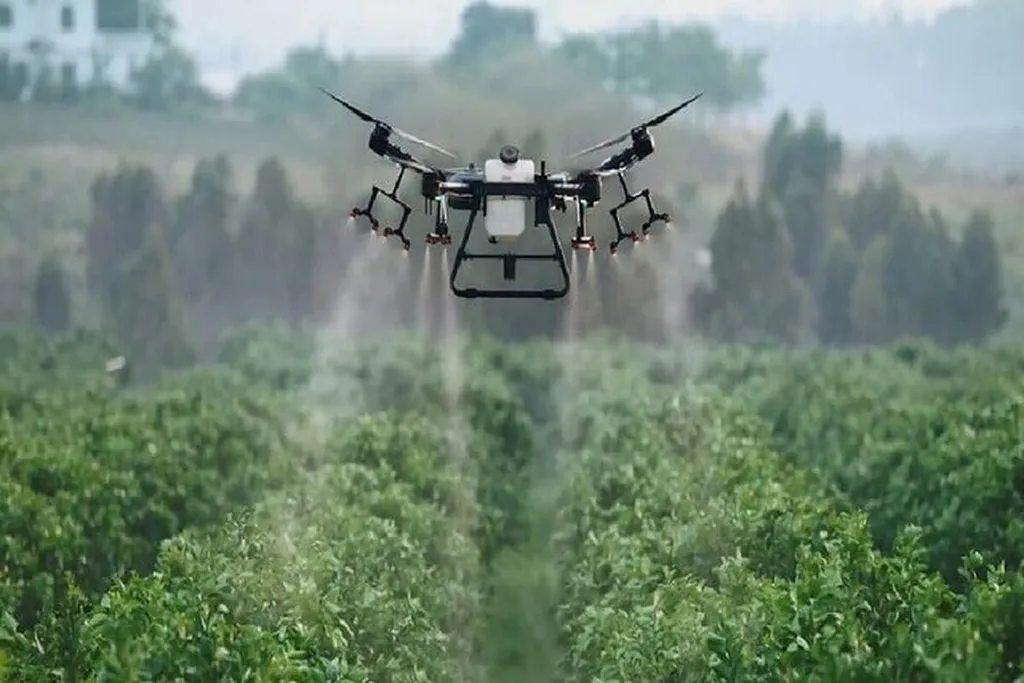In the heart of Iran, at the Sharif University of Technology, a team of researchers led by Amin Talaeizadeh from the Advanced Research Lab for Control and Agricultural Robotics (Sharif AgRoLab) is revolutionizing the way we think about agriculture. Their latest work, published in the journal *Smart Agricultural Technology* (translated from Persian as “Intelligent Agricultural Technology”), offers a comprehensive review of agricultural spraying drones (ASDs), a technology poised to transform precision agriculture and smart farming.
As the global population continues to grow, the demand for food is expected to rise significantly by 2050. Traditional farming methods may not be sufficient to meet this demand, necessitating innovative solutions. Enter agricultural spraying drones, which promise to enhance crop yields and efficiency. “The adoption of drone technology in agriculture is not just a trend; it’s a necessity,” Talaeizadeh asserts. “These drones can offer several potential benefits over traditional methods, including increased precision, reduced chemical usage, and improved safety.”
The review paper delves into the various types and structures of spraying drones, their dynamics modeling and control strategies, path planning, swarm control methodologies, and droplet deposition processes. It also introduces criteria for selecting appropriate drones for specific applications. This comprehensive analysis is crucial for researchers, practitioners, and policymakers interested in leveraging drone technology for precision agriculture.
One of the most compelling aspects of this research is its potential commercial impact. As the energy sector increasingly focuses on sustainability and efficiency, agricultural spraying drones offer a promising avenue for reducing the environmental footprint of farming. By optimizing the use of pesticides and fertilizers, these drones can minimize waste and reduce the need for energy-intensive traditional spraying methods.
“The advancements in drone technology are not just about improving yields; they’re about creating a more sustainable and efficient agricultural system,” Talaeizadeh explains. “This technology has the potential to reshape the future of farming, making it more precise, eco-friendly, and productive.”
The research also highlights the challenges and future prospects of spraying drones in agriculture. As the technology continues to evolve, it is expected to play an increasingly vital role in meeting the food demands of a growing population. The insights provided by Talaeizadeh and his team could pave the way for further innovations in this field, ultimately benefiting both farmers and consumers.
In conclusion, the work of Amin Talaeizadeh and his colleagues at Sharif AgRoLab represents a significant step forward in the field of precision agriculture. Their comprehensive review of agricultural spraying drones offers valuable insights into the current state and future potential of this transformative technology. As the world grapples with the challenges of feeding a growing population, the innovations highlighted in this research could prove invaluable in shaping a more sustainable and efficient agricultural future.

